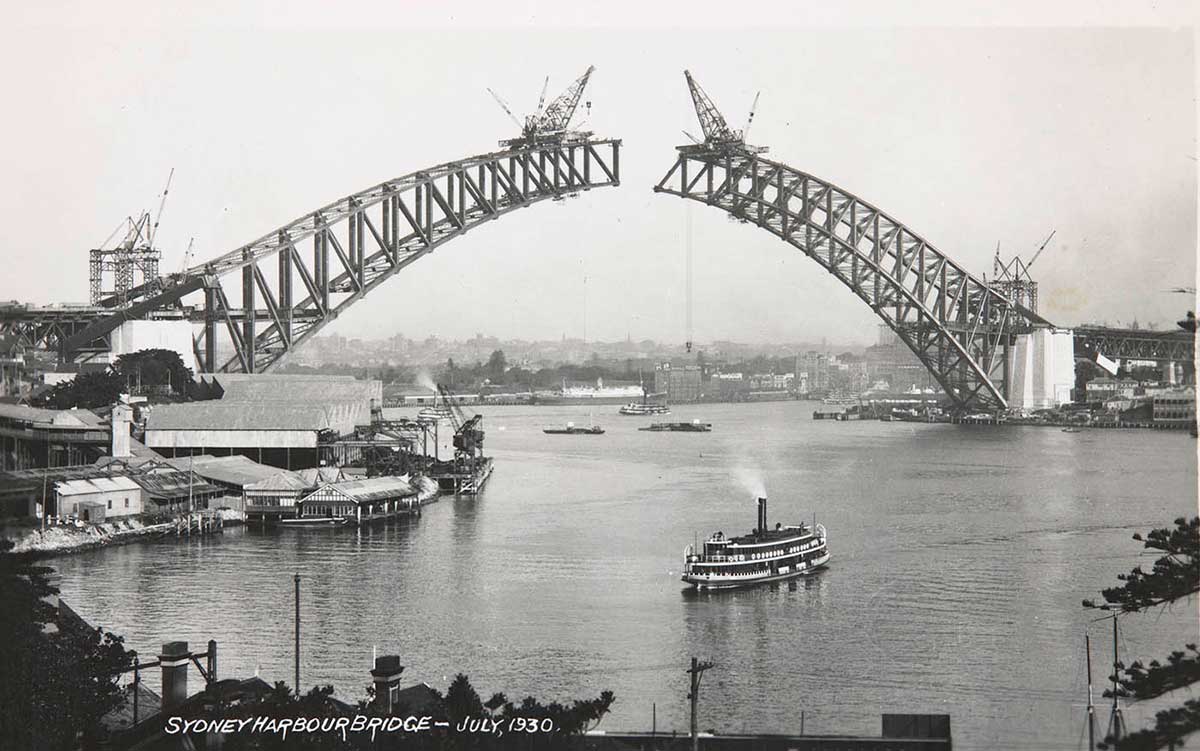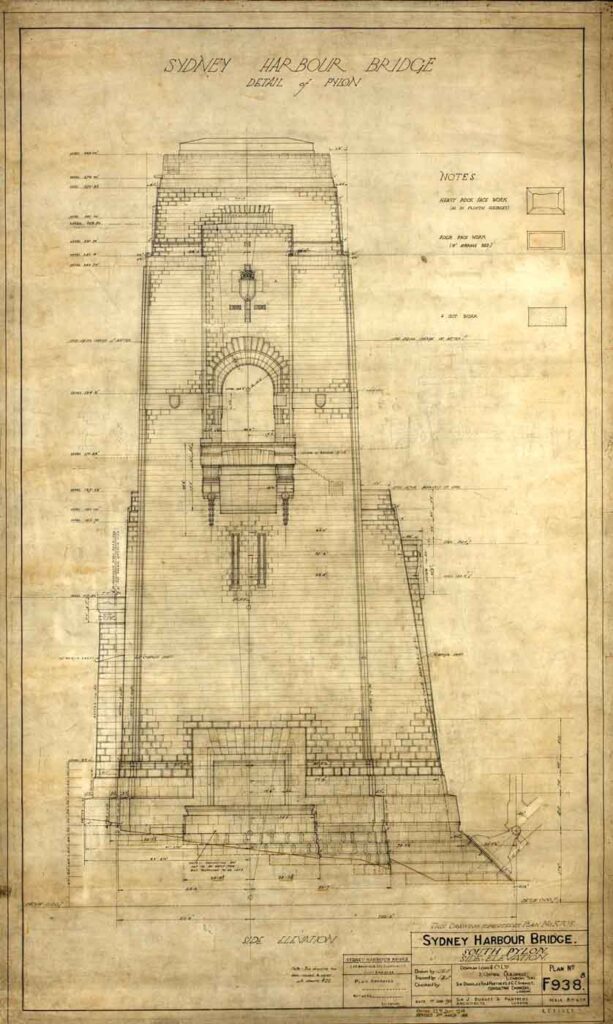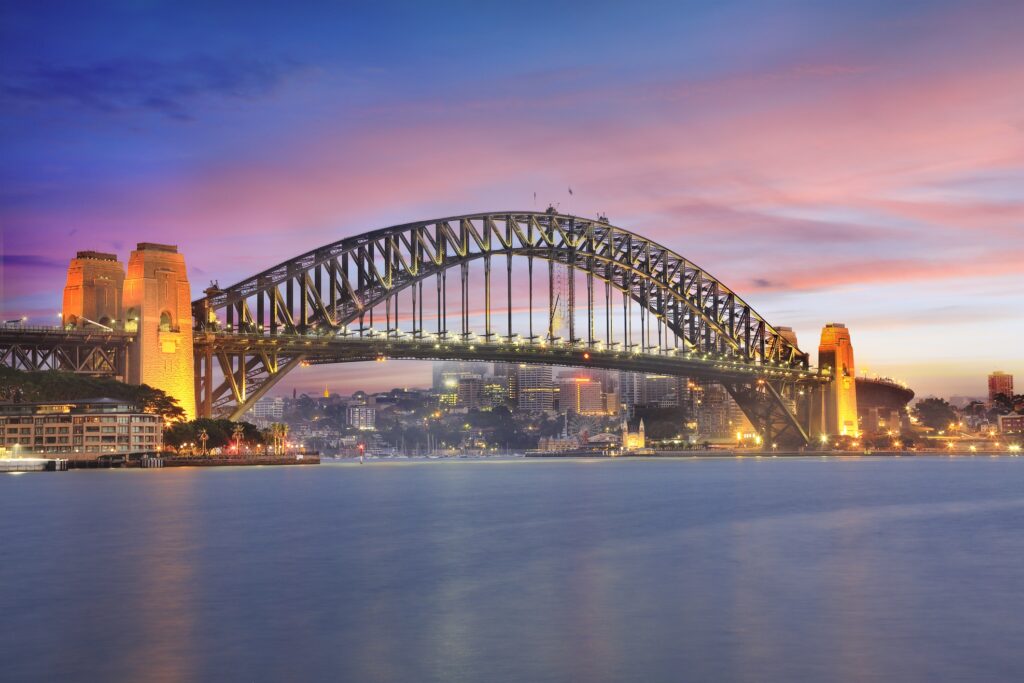
The Sydney Harbour Bridge stands as an iconic symbol of both Sydney and Australia as a whole, captivating the world with its grandeur, engineering brilliance, and historic significance. Spanning the sparkling waters of Sydney Harbour, the bridge is a testament to human innovation and determination. Its sweeping arches, intricate construction, and prominent location have made it not only an essential transportation link but also a beloved landmark that defines the city’s skyline.
Historical Context and Significance
The idea for the Sydney Harbour Bridge emerged in the early 20th century when the need for a reliable transportation connection between Sydney’s northern and southern shores became evident. The harbor’s natural barrier posed a challenge, prompting discussions about potential solutions. In 1922, the New South Wales government launched a global design competition to find the most suitable bridge design.
The winning design, submitted by British engineers Sir Ralph Freeman and Dr. John Bradfield, proposed a single-arch steel bridge. This daring concept deviated from traditional cantilever or suspension bridge designs and showcased a pioneering approach. Construction commenced in 1924 amid economic challenges, but the Great Depression slowed progress further. Despite the odds, the bridge was completed in 1932, serving as a beacon of hope and employment during trying times.
Architectural Marvel
The Sydney Harbour Bridge is renowned for its arch-based design. The arch, a parabolic curve rising gracefully from either end, was a revolutionary choice, allowing for the elimination of multiple piers in the water. This decision was not only aesthetically pleasing but also minimized disruption to maritime traffic. The two halves of the arch were constructed simultaneously, meeting at the apex in the middle of the harbor.

The bridge’s steelwork is a masterpiece of engineering precision. Approximately 52,800 tons of steel were used in its construction, forming a lattice-like framework that combines strength with elegance. The arch rises to a height of 134 meters (440 feet) above the water, providing ample clearance for tall ships to pass beneath. The monumental granite pylons at each end of the bridge serve both as decorative elements and essential structural supports.
Construction Challenges
The construction of the Sydney Harbour Bridge was a daunting undertaking that required innovative techniques and the perseverance of countless workers. The Great Depression, which had engulfed the world, presented financial and logistical difficulties. Many workers faced unemployment, and the construction of the bridge provided a lifeline for thousands. The “Iron Ring,” as it came to be known, was the group of ironworkers who fearlessly toiled at heights, riveting and welding the steel sections together.
One of the most remarkable aspects of the construction process was the erection of the arches. Using an ingenious method involving creeper cranes and an overhead gantry system, the arches were gradually built out from each end until they met at the center. This feat of engineering precision required meticulous calculations to ensure that the arches aligned perfectly.
Cultural and Touristic Icon
The completion of the Sydney Harbour Bridge had a profound impact on the city’s identity and infrastructure. The bridge was not just a transportation link; it became a symbol of unity and progress. Its completion marked a turning point in the development of Sydney as a modern metropolis.
Today, the Sydney Harbour Bridge is a cultural and touristic icon that draws millions of visitors annually. The BridgeClimb experience allows adventurous individuals to ascend to the top of the bridge, providing breathtaking panoramic views of the harbor and cityscape. The bridge is also a focal point for various events and celebrations, including the famous New Year’s Eve fireworks display that illuminates the skies over Sydney.
Ongoing Maintenance and Upgrades
Maintaining the Sydney Harbour Bridge’s structural integrity and preserving its iconic status requires ongoing attention. Regular maintenance and restoration work ensure that the bridge remains safe for pedestrians, cyclists, and vehicular traffic. Over the years, the bridge has undergone several upgrades, including the addition of pedestrian walkways, cycle lanes, and improved lighting.
In the end of the day

The Sydney Harbour Bridge stands as an emblem of human ingenuity, resilience, and progress. Its grand arches stretching over the waters of Sydney Harbour serve as a constant reminder of the power of human determination to overcome challenges and create enduring landmarks. From its historical significance to its role in modern-day tourism, the bridge continues to be an iconic symbol of Sydney’s identity and a testament to the capabilities of engineering and innovation.In